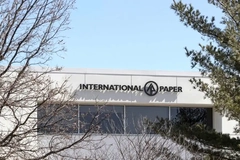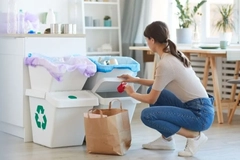Fresh Inset introduces shelf life-extending packaging, films and stickers to US market
22 Aug 2024 --- European-based Fresh Inset has introduced its food-preserving Vidre+ Complex to the US market. The formula, intended for use in fresh produce packaging, is infused with 1-MCP (1-methylcyclopropene), which is said to extend the shelf life and quality of fruits and vegetables when applied to packaging, films and stickers.
Once triggered by humidity, Vidre+ gradually releases an ethylene blocker over time for “maximum effectiveness” during post-harvest storage, transport and retail. Fresh Inset claims this effectively extends the freshness, quality, appearance and nutrient values of produce.
The patented timed and gradual release of 1-MCP in Vidre+ technology ensures a “controlled application.”
“Research has proven Vidre+ is effective on cherries, blueberries, raspberries, table grapes, limes, tomatoes, avocados, leafy greens, broccoli, peppers and more,” says Dr. Tim Malefyt, Fresh Inset’s chief technology officer.
“Game changer” and widely applicable
Vidre+ Stickers can be adapted to every existing type of fresh produce packaging, highlights Fresh Inset.
“It can be used right after harvest as well as during transport or storage to provide days to weeks (depending on the crop type) of additional shelf life to freshly harvested produce, helping to keep its quality and nutritional value and remain fit for the market,” explains Dr. Malefyt.
“We are excited to offer a solution that extends beyond apples and pears to benefit many other produce categories. This is a game changer.”
 Vidre+ Stickers can be adapted to every existing type of fresh produce packaging.The stickers can also be tailored to optimize size and dose rate, ensuring effective protection for ethylene-sensitive produce in any type or size of packaging, including cardboard boxes, bags, trays and clamshells. Branding and white-label opportunities are also available.
Vidre+ Stickers can be adapted to every existing type of fresh produce packaging.The stickers can also be tailored to optimize size and dose rate, ensuring effective protection for ethylene-sensitive produce in any type or size of packaging, including cardboard boxes, bags, trays and clamshells. Branding and white-label opportunities are also available.
Hitting GRAS status
Vidre+ has received GRAS status by the FDA, with future plans set on “disrupting and de-commoditizing” the flexible and cardboard packaging industries.
The company is adapting its solution further toward PE, PP, PET films and paper cardboard, which will carry the same ability to extend freshness, without creating additional landfill waste.
“The use of Vidre+ to combat the negative effects of ethylene and extend produce shelf life is not new. However, Fresh Inset has taken it to the next level with dose rate flexibility and gradual release technology that is operationally simple, affordable and enhances profitability,” says Kevin Frye, Fresh Inset’s VP for market development in North America.
“This is an incredibly exciting innovation that is garnering unprecedented interest amongst growers, packers, shippers and retailers alike, as they can all easily incorporate it into their operations and benefit from it, while increasing their sustainability efforts toward food waste reduction,” he adds.
“Packaging companies are equally excited about the ability to empower their existing bags, boxes and clamshells with a freshness function and deliver added value packaging to their customers that will actually improve the freshness and quality of their produce.”
Vidre+ was registered on the Peruvian market for avocado producers last month. The move secures the shelf life of much of the country’s annual exports, which amount to over 616,000 tons — worth more than US$1 billion. Peru held a 12.2% global share of the avocado market in 2022.
In other moves within the preservation space, food technology company Saveggy developed an edible coating that increases the shelf life of fresh fruits and vegetables. The solution is a thin protective layer based on plant sources such as canola and oats, which prevents moisture loss, while slowing down oxidation to help retain the product’s firmness and visual appeal.
Meanwhile, Italian company Qwarzo uses silicon dioxide, linked to cellulose fibers, as a replacement for materials like PFAS. Qwarzo’s barrier solution turns paper or cardboard hydrophobic, which can be used to pack foodstuffs.
By Benjamin Ferrer












